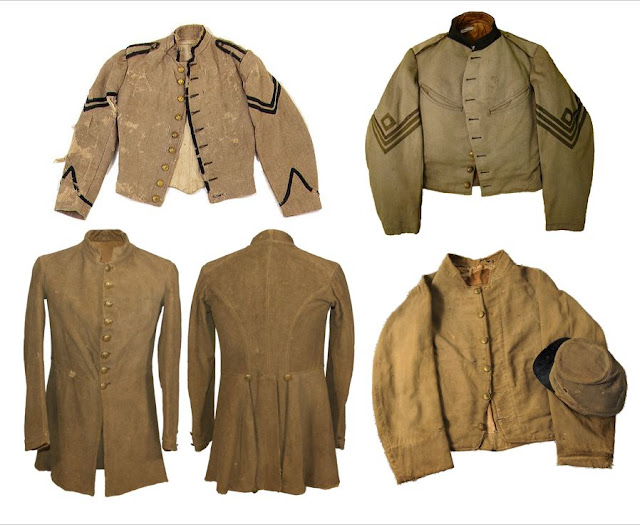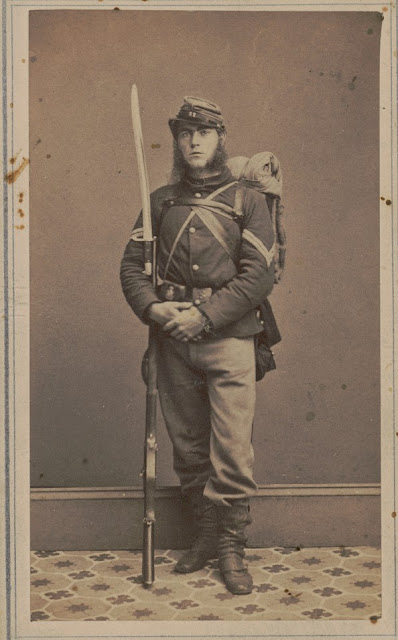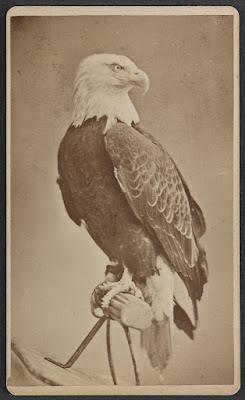Knee Deep in the Swamp: The 10th Connecticut at Kinston
The Battle
of Kinston, North Carolina, was fought December 14, 1862, between Federal
forces under General John G. Foster and a small force of Confederates led by
General Nathan Evans. Foster marched out from New Bern with roughly 10,000 men
aiming to break the Wilmington & Weldon Railroad.
In this letter written home to his parents in Connecticut, Private Eugene W. Chaffee of Co. E, 10th Connecticut Infantry describes his experiences in this all-but -forgotten engagement that cost his regiment 104 casualties. His letter first appeared in the January 23, 1863, edition of the Willimantic Journal published in Willimantic, Connecticut.
After a mile or two again we heard the
roar of cannons, the herald of approaching battle. It took us two or three
hours to reach the vicinity, halting along the way as we did all the while. The
advance was engaged principally with artillery, trying to shell them out. We
came up, passed several regiments, filed into the field, and were ordered
forward into the swamp. In we went by the left of companies to the front and we pushed through the tangled swamp, knee deep in mud as best we could. We could
not keep any shape and hardly could keep up with our officers.
On we went till we came to two other
regiments lying down doing nothing. We formed in line of battle and pushed
forward over them- the new 45th Massachusetts and the old 103rd
Pennsylvania until we reached ahead of the 103rd then we lay down
and replied to the sharp firing of the foe for we had by this time reached the edge
of the swamp in plain sight of them. We kept up an awful fire upon them in
conjunction with some of the 103rd until it became intolerable for
them, I suppose, for they filed off.
 |
| Lieutenant John M. Simms Co. G, 10th C.V. Severely wounded in right shoulder Died of wounds Jan 11, 1863 |
We could see them away to the left and some supposed they
were our men flanking them and we ceased firing. I thought all the while they
were Rebels and so did others. We were ordered to rise up and move forward in
line which we did until we came to a slight elevation previously occupied by
the enemy. Here we could see them skedaddling across the bridge into Kinston.
Then we halted and began such a fire upon the bridge as soon caused the tide to
move the other way and escape the fire by getting under the bank of the rover.
One came out with a flag of truce and we went out to meet it on the double
quick.
When we came to the brink of the river, from 50-100 Rebels
threw down their arms and surrendered. Beyond the river was a large field
across which the Rebels were scattering besides the column on the road. We
poured into them a desultory fire and the artillery came up and opened. Here
Lieutenant Perkins was killed and one or two wounded by the sharpshooters of
the Rebel rearguard. All this while the bridge, which had been fired by the
Rebels was burning slowly. A squad from the battery and 10th Connecticut
with the artillery buckets went on to the bridge and put out the fire; I was
one of them. We worked hard but put it out and then the 10th and one
of the New York regiments went across, but the Rebels were all out of sight except
for stragglers who wanted to be taken prisoner. [Altogether the Confederates
lost about 400 men taken prisoner during the fight.]
 |
| General John G. Foster |
Colonel Stevenson rode up and thanked us for the honor we had
conferred on his brigade by our gallantry. Soon after, General [John G.] Foster
rode by and as cheer after cheer went up, he stopped, uncovered his head, and
rode up to us. He, too, thanked us for our gallant conduct. He told us we were
entitled to the name bravest of the brave, prayed God to bless us, and a
hundred other expressions of thankfulness for having, as he said, won the
battle.
It was an hour of glory for the 10th but purchased at what cost! Of a little over 300 men in the battle, 104 were killed or wounded, most of the wounded severely. That night’s bivouac was a sorrowful one; my bedfellow was wounded, others were killed. All had a friend in the morning that was not there and the 10th Connecticut’s line of stacks was far shorter than when broken in the morning.
Source:
Letter from
Private Eugene Winslow Chaffee, Co. E, 10th Connecticut Volunteer
Infantry, Willimantic Journal (Connecticut), January 23, 1863, pg. 1











Comments
Post a Comment